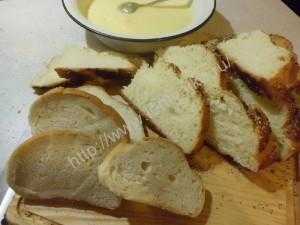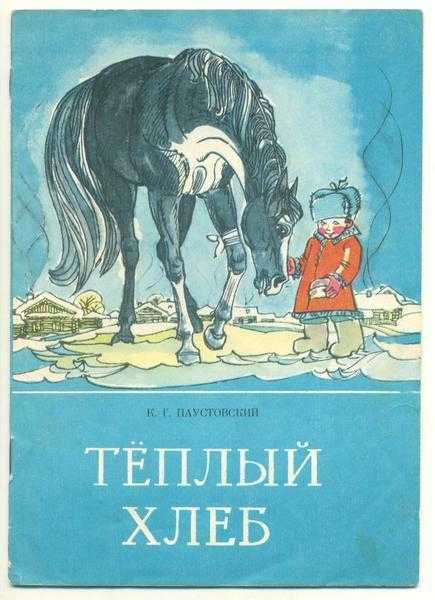Хлеб (скульптурная композиция). Скульптурная композиция хлеб
Хлеб (скульптурная композиция) - WikiVisually
1. Россия – Russia, also officially the Russian Federation, is a country in Eurasia. The European western part of the country is more populated and urbanised than the eastern. Russias capital Moscow is one of the largest cities in the world, other urban centers include Saint Petersburg, Novosibirsk, Yekaterinburg, Nizhny Novgorod. Extending across the entirety of Northern Asia and much of Eastern Europe, Russia spans eleven time zones and incorporates a range of environments. It shares maritime borders with Japan by the Sea of Okhotsk, the East Slavs emerged as a recognizable group in Europe between the 3rd and 8th centuries AD. Founded and ruled by a Varangian warrior elite and their descendants, in 988 it adopted Orthodox Christianity from the Byzantine Empire, beginning the synthesis of Byzantine and Slavic cultures that defined Russian culture for the next millennium. Rus ultimately disintegrated into a number of states, most of the Rus lands were overrun by the Mongol invasion. The Soviet Union played a role in the Allied victory in World War II. The Soviet era saw some of the most significant technological achievements of the 20th century, including the worlds first human-made satellite and the launching of the first humans in space. By the end of 1990, the Soviet Union had the second largest economy, largest standing military in the world. It is governed as a federal semi-presidential republic, the Russian economy ranks as the twelfth largest by nominal GDP and sixth largest by purchasing power parity in 2015. Russias extensive mineral and energy resources are the largest such reserves in the world, making it one of the producers of oil. The country is one of the five recognized nuclear weapons states and possesses the largest stockpile of weapons of mass destruction, Russia is a great power as well as a regional power and has been characterised as a potential superpower. The name Russia is derived from Rus, a state populated mostly by the East Slavs. However, this name became more prominent in the later history, and the country typically was called by its inhabitants Русская Земля. In order to distinguish this state from other states derived from it, it is denoted as Kievan Rus by modern historiography, an old Latin version of the name Rus was Ruthenia, mostly applied to the western and southern regions of Rus that were adjacent to Catholic Europe. The current name of the country, Россия, comes from the Byzantine Greek designation of the Kievan Rus, the standard way to refer to citizens of Russia is Russians in English and rossiyane in Russian. There are two Russian words which are translated into English as Russians
2. Москва – Moscow is the capital and most populous city of Russia, with 13.2 million residents within the city limits and 17.8 million within the urban area. Moscow has the status of a Russian federal city, Moscow is a major political, economic, cultural, and scientific center of Russia and Eastern Europe, as well as the largest city entirely on the European continent. Moscow is the northernmost and coldest megacity and metropolis on Earth and it is home to the Ostankino Tower, the tallest free standing structure in Europe, the Federation Tower, the tallest skyscraper in Europe, and the Moscow International Business Center. Moscow is situated on the Moskva River in the Central Federal District of European Russia, the city is well known for its architecture, particularly its historic buildings such as Saint Basils Cathedral with its brightly colored domes. Moscow is the seat of power of the Government of Russia, being the site of the Moscow Kremlin, the Moscow Kremlin and Red Square are also one of several World Heritage Sites in the city. Both chambers of the Russian parliament also sit in the city and it is recognized as one of the citys landmarks due to the rich architecture of its 200 stations. In old Russian the word also meant a church administrative district. The demonym for a Moscow resident is москвич for male or москвичка for female, the name of the city is thought to be derived from the name of the Moskva River. There have been proposed several theories of the origin of the name of the river and its cognates include Russian, музга, muzga pool, puddle, Lithuanian, mazgoti and Latvian, mazgāt to wash, Sanskrit, majjati to drown, Latin, mergō to dip, immerse. There exist as well similar place names in Poland like Mozgawa, the original Old Russian form of the name is reconstructed as *Москы, *Mosky, hence it was one of a few Slavic ū-stem nouns. From the latter forms came the modern Russian name Москва, Moskva, in a similar manner the Latin name Moscovia has been formed, later it became a colloquial name for Russia used in Western Europe in the 16th–17th centuries. From it as well came English Muscovy, various other theories, having little or no scientific ground, are now largely rejected by contemporary linguists. The surface similarity of the name Russia with Rosh, an obscure biblical tribe or country, the oldest evidence of humans on the territory of Moscow dates from the Neolithic. Within the modern bounds of the city other late evidence was discovered, on the territory of the Kremlin, Sparrow Hills, Setun River and Kuntsevskiy forest park, etc. The earliest East Slavic tribes recorded as having expanded to the upper Volga in the 9th to 10th centuries are the Vyatichi and Krivichi, the Moskva River was incorporated as part of Rostov-Suzdal into the Kievan Rus in the 11th century. By AD1100, a settlement had appeared on the mouth of the Neglinnaya River. The first known reference to Moscow dates from 1147 as a place of Yuri Dolgoruky. At the time it was a town on the western border of Vladimir-Suzdal Principality
3. Мухина, Вера Игнатьевна – Vera Ignatyevna Mukhina was a prominent Soviet sculptor. Mukhina was born in Riga into a merchant family. 23/25, where a plaque has now been placed. She later moved to Moscow, where she studied at private art schools, including those of Konstantin Yuon. In 1915 and 1916, she served as assistant to Aleksandra Ekster at Alexander Tairovs Chamber Theater in Moscow, in 1918 she married Alexei Zamkov, a military surgeon. She taught at the school, Vkhutemas, in 1926–1927. Her studios work on monuments and architectural sculpture on state commissions continued through her death. She also experimented with glass, producing glass figural busts, from 1941 to 1952, Mukhina won the Stalin Prize five times, was named Peoples Artist of the USSR in 1943. Due to her efforts, the monument was not demolished to make way for a statue of Joseph Stalin, in 1953 she wrote A Sculptors Thoughts. Mukhina died in Moscow on 6 October 1953 and she is buried in Novodevichy Cemetery. In 2007, Mukhinas house and studio at 3a Prechistensky Lane were slated for demolition, Mukhinas most celebrated work by far is the giant monument Worker and Kolkhoz Woman which was the centerpiece of the Soviet pavilion at the 1937 International Exhibition in Paris. It was the worlds first welded sculpture, the 24-meter-tall, 75-ton monument was made of plate of stainless steel on a wooden frame, the plates connected by an innovative method of spot welding. One hand of each figure holds respectively a hammer and a sickle, in 1947 the sculpture, now on permanent display at the All-Russia Exhibition Centre, became the logo of the Russian Mosfilm studio. It was renovated and re-installed on a pedestal in 2009. Mukhina served as coordinator of other sculptors for this project, the work ended up becoming the 24-meter tall sculpture Known at the Worker and Kolkhoz Woman. During the winter, given only a 3 month time span, Vera, the work was a piece of Socialist Realism, common in the Soviet Union at the time. Made of steel, the sculpture features both a man and a woman, each holding a hammer and a sickle, the sculpture was placed atop Boris Iofans Pavilion design. The Museum of Vera Mukhina dedicated to the sculptors adolescence and work was established in Feodosiya, Crimea, Ukraine in 1985
4. Ленинградский проспект – Leningradsky Prospekt, or Leningrad Avenue, is a major arterial avenue in Moscow, Russia. The Highway continues its way to Saint Petersburg via Tver, until 1957, Leningradsky Prospekt was part of Leningrad Highway. Both avenues retain their Lenin-related names after the reinstatement of the historical Saint Petersburg name, the old road to Tver, changing its course over Middle Ages, settled in its present site in the 16th century. The name Peterburskoye Schosse was established when the road was paved between 1786 and 1790. The most important historical building on the road, Gothic Revival Petrovsky Palace, was built in 1776–1780 by Matvey Kazakov as the last station of royal journeys from Saint Petersburg to Moscow, coaches for lesser classes arrived and departed from Vsekhsvyatskoye village near present-day Sokol metro station. Territories south of the highway - Khodynka Field - were used mostly for military training, bashilov also laid down the boulevards along the highway, some of them remain to date. Soon, the beginning of Petersburg Highway turned into a recreation area, with country restaurants. Smolensky Rail station was inaugurated in 1870, between 1882 and 1896, Khodynka housed the national Exhibition of Industry and Arts, later transferred to the Nizhny Novgorod fairground. The Sokol Settlement of single-family homes, built in early 1920s near the junction of Petersburg and Volokolamsk highway, since the 1910s, Khodynka has been used as Moscows airfield, and housed Moscows Central Airport until the 1950s, irregular DOSAAF flights continued until the 1980s. Local transportation developed from trams to trolleybuses and subway, Leningradsky Prospekt itself is home to the future Dynamo Stadium and CSKA Moscows winter and basketball arenas. Its bell tower is one of Russias leaning towers, since 2005, the city of Moscow is engaged in a multi-billion project of converting Leningradsky arterial, from downtown Tverskaya Street to MKAD, into a 12-lane, non-stop freeway with frontage roads. In addition, the project began with irreversible destruction of the tram route along the Prospekt. In March,2006, the approved project stages were valued at 57 billion roubles, there are plans to build a bypass private toll road to the airport currently in design stage. Daytime traffic is frequently paralyzed by construction detours, thus the only reliable transportation is through Zamoskvoretskaya Line of Moscow Metro. П. В. Сытин, Из истории московских улиц, М,1948 Construction schedule in English Pushkin Square Under Threat - The Moscow Times Pushkin Square tunnel - The Guardian
5. Рабочий и колхозница – Worker and Kolkhoz Woman is a sculpture of two figures with a sickle and a hammer raised over their heads. It is 24.5 meters high, made from steel by Vera Mukhina for the 1937 Worlds Fair in Paris. The sculpture is an example of the socialist realistic style, as well as Art Deco style, the worker holds aloft a hammer and the kolkhoz woman a sickle to form the hammer and sickle symbol. The sculpture was created to crown the Soviet pavilion of the Worlds Fair. The organizers had placed the Soviet and German pavilions facing each other across the main pedestrian boulevard at the Trocadéro on the bank of the Seine. The symbolism of the two figures striding from West to East, as determined by the layout of the pavilion, was not lost on the spectators. In 1941, the sculpture earned Mukhina one of the batch of Stalin Prizes. The sculpture was removed for restoration in autumn of 2003 in preparation for Expo 2010, see 2007 photographs of the disassembled statue. It finally returned to its place at VDNKh on November 28,2009, the revealing of the restored monument was held on the evening of December 4,2009, accompanied by fireworks. The restored statue uses a new pavilion as its pedestal, increasing its height from 34.5 meters to 60 meters. In Soviet cinema, Rabochiy i Kolkhoznitsa was chosen in 1947 to serve as the logo for the film studio Mosfilm and it can be seen in the opening credits of the film Red Heat, as well as many of the Russian films released by the Mosfilm studio itself. A giant moving reproduction of the statue was featured in the ceremony of the 2014 Winter Olympics in Sochi, Russia, symbolizing post-World War II Soviet society. The Magic is Might monument in Harry Potter and the Deathly Hallows Part 1 is based on the statue, socialist realism List of statues by height
6. Памятник героям Плевны – The Plevna Chapel is a public subscription monument to the Russian Grenadiers who died during the Siege of Plevna. It was opened on a square outside the Ilyinka Gate of the Walled City in Moscow on the 10th anniversary of the taking of Pleven, the monument was designed by Vladimir Sherwood. Each side is decorated with a relief plaque illustrating the exploits of the Grenadiers. The interior, now empty, once housed a set of bronze plaques listing 18 Grenadier officers and 542 soldiers who died at Plevna, an annual memorial service is held in front of the chapel on March 3. The surrounding park is notorious as a gay cruising ground, media related to Plevna Chapel-Monument at Wikimedia Commons
7. Могила Неизвестного Солдата – The Tomb of the Unknown Soldier is a war memorial, dedicated to the Soviet soldiers killed during World War II. It is located at the Kremlin Wall in the Alexander Garden in Moscow and this was the location of the closest approach of the German armies to Moscow during the war. To commemorate the 25th anniversary of the battle, in December 1966 these remains were relocated to the Kremlin Wall, the Tomb of the Unknown Soldier was designed by architects D. I. Burdin, V. A. Klimov, Yu. R. Rabayev and sculptor Nikolai Tomsky, the dark red porphyry monument is decorated with a bronze sculpture of a laurel branch and a soldiers helmet laid upon a banner. In front of the monument, there is a star in a square field of labradorite. The flame illuminates a bronze inscription Имя твоё неизвестно, подвиг твой бессмертен, the torch for the memorials Eternal Flame was transported from Leningrad, where it had been lit from the Eternal Flame at the Field of Mars. To the left of the tomb is a wall with an inlay stating,1941 - To Those Who Have Fallen For The Motherland -1945. The plate for “Stalingrad” read “Volgograd” until September 2004, further to the right of these monuments is an obelisk in red granite, listing the names of 40 “Cities of Military Glory” divided into groups of four. This monument was dedicated on May 8,2010, a Changing of the Guard Ceremony takes place every hour. The living & the dead, the rise and fall of the cult of World War II in Russia
8. Штыки (мемориал) – The Shtyki Memorial, also named the Monument to the Defenders of Moscow, is a memorial complex in honour of those who defended Russia in the Battle of Moscow. At the site are a grave and an architectural complex. It is located on the 40th km of Leningrad highway, at the entry into the city of Zelenograd heading south. The memorial complex obtained its name because of the central obelisk, the first burials in the common grave were in the winter of 1941, the architectural features were completed on 24 June 1974. The architects of the project were I. A. Pokrovsky, and Y. A. Sverdlovsky, with sculptors A. G. Shteyman, the complex is composed of a kurgan, the Shtyki obelisk, and a bas-relief triptych with inscriptions. The kurgan contains the grave known as Hill of Glory. The Shtyki obelisk is composed of three stylized bayonets that symbolize the rifle, tank and cavalry divisions and it is made of reinforced concrete and has a height of 42 meters from the apex of the barrow. The bas-relief triptych is on the side of the kurgan. Sculpted into three concrete stele are reliefs depicting a soldier in the helmet, a branch. Здесь защитники Москвы, погибшие в бою за Родину, остались навеки бессмертны in English,1941 Here the defenders of Moscow, fallen in battle for the Motherland, under the bronze wreath rest the ashes of hundreds of Soviet soldiers. On the wreath is inscribed, Никогда Родина-мать не забудет своих сыновей in English, the Shtyki Memorial is connected with other monuments, particularly the Tomb of the Unknown Soldier at the Moscow Kremlin, and the Kurgan of Glory in Minsk. On 3 December 1966, in the commemoration of the 25 summer anniversary of the defeat of Hitlers troops in the environs of Moscow, the Shtyki complex is sometimes confused with the Belarusian Kurgan of Glory complex due to their similarities. Both are memorial complexes built on kurgans, zelenograds memorial has 3 bayonets, and the Belarusian memorial has 4. The names of the mounds are also similar, where Zelenograd has the name Hill of Glory. The monument has become an element of the flag of the city of Zelenograd, a stylized drawing of the monument in silver or white is displayed on the flag which is in turn displayed on the center shield of the coat of arms. It is on a red background in the right portion of the flag. On these two emblems the monument symbolizes the important boundary in the defense of the capital, and the beginning of the defeat of Hitlers troops in the environs of Moscow in 1941. Opposite the monument on the flag is a golden image of a microchip in the form of an equilateral cross
wikivisually.com
Хлеб (скульптурная композиция) — Википедия (с комментариями)
Материал из Википедии — свободной энциклопедии
| Памятник | |
Скульптурная композиция «Хлеб» | |
Ошибка создания миниатюры: Файл не найден Скульптурная композиция «Хлеб» | |
| Страна | Россия |
| Город | Москва |
| Конфессия | Ошибка Lua в Модуль:Wikidata на строке 170: attempt to index field 'wikibase' (a nil value). |
| Епархия | Ошибка Lua в Модуль:Wikidata на строке 170: attempt to index field 'wikibase' (a nil value). |
| Архитектурный стиль | Ошибка Lua в Модуль:Wikidata на строке 170: attempt to index field 'wikibase' (a nil value). |
| Скульптор | В. И. Мухина |
| Архитектор | И. Е. Рожин[1] |
| Основатель | Ошибка Lua в Модуль:Wikidata на строке 170: attempt to index field 'wikibase' (a nil value). |
| Первое упоминание | Ошибка Lua в Модуль:Wikidata на строке 170: attempt to index field 'wikibase' (a nil value). |
| Дата основания | Ошибка Lua в Модуль:Wikidata на строке 170: attempt to index field 'wikibase' (a nil value). |
| Дата упразднения | Ошибка Lua в Модуль:Wikidata на строке 170: attempt to index field 'wikibase' (a nil value). |
| Статус | Герб России Объект культурного наследия РФ [http://old.kulturnoe-nasledie.ru/monuments.php?id=Ошибка Lua: callParserFunction: function "#property" was not found. № Ошибка Lua: callParserFunction: function "#property" was not found.]№ Ошибка Lua: callParserFunction: function "#property" was not found. |
| Высота | Ошибка Lua в Модуль:Wikidata на строке 170: attempt to index field 'wikibase' (a nil value). |
| Материал | Ошибка Lua в Модуль:Wikidata на строке 170: attempt to index field 'wikibase' (a nil value). |
| Сайт | Ошибка Lua в Модуль:Wikidata на строке 170: attempt to index field 'wikibase' (a nil value). |
| 12px [[:commons:Category:Ошибка Lua: callParserFunction: function "#property" was not found.|Скульптурная композиция «Хлеб»]] на Викискладе | |
Скульптурная композиция «Хлеб» в Москве установлена на Ленинградском проспекте в Парке Дружбы.
История
Скульптурная композиция «Хлеб» была установлена в 1963 году рядом с центральным входом в Парк Дружбы, расположенного неподалеку от Речного вокзала. Две молодые девушки поднимают над головой огромный сноп колосьев. Скульптура выполнена по эскизам советского скульптора Веры Мухиной — автора памятника Рабочий и колхозница. Является парной с установленной неподалеку скульптурной композицией Плодородие.
Напишите отзыв о статье "Хлеб (скульптурная композиция)"
Примечания
- ↑ Памятники Москвы советской на карте города // Московское наследие. — 2014. — № 6 (36). — С. 18—21.</span>
</ol>
Ссылки
- [http://www.intomoscow.ru/skulpturnaya-kompoziciya-hleb.html Скульптурная композиция Хлеб] (рус.). Проверено 20 июля 2014.
Отрывок, характеризующий Хлеб (скульптурная композиция)
– Земля будет ещё очень долго и страшно страдать, Изидора... Пока не придёт к самому краю погибели. И всегда за неё будут гибнуть лишь самые лучшие. А потом придёт время выбора... И только сами люди смогут решить, хватит ли у них сил, чтобы выстоять. Мы лишь укажем путь. – А ты уверен в том, что будет, кому указывать, Север? Возможно тем, кто останется, будет уже безразлично... – О, нет, Изидора! Человек необычайно силён в своей выживаемости. Ты даже представить себе не можешь, как он силён! И настоящий Человек никогда не сдаётся... Даже если он остаётся один. Так было всегда. И так всегда будет. На Земле очень сильна сила Любви и сила Борьбы, даже если люди пока ещё этого не понимают. И здесь всегда найдётся кто-то, кто поведёт остальных за собой. Главное лишь в том, чтобы этот Ведущий не оказался «чёрным»... С самого своего рождения человек ищет цель. И только от него зависит, найдёт он её сам или окажется тем, которому эта цель будет дана. Люди должны научиться думать, Изидора. А пока, к сожалению, многих устраивает то, что за них думают другие. И пока это будет продолжаться, Земля всё так же будет терять своих лучших сынов и дочерей, которые будут платить за невежество всех «ведомых». Поэтому-то я и не буду тебе помогать, Изидора. И никто из нас не будет. Ещё не пришло время, чтобы на карту было поставлено всё. Если мы погибнем сейчас, борясь за горстку Просветлённых, даже если им уже пришло время ЗНАТЬ, то после, «знать» уже будет некому более... Вижу, не убедил тебя, – губы Севера тронула лёгкая улыбка. – Да ты и не была бы собой, если бы убедил... Но прошу тебя только об одном – уходи, Изидора! Это не твоё время, и не твой это мир! Мне стало до дикости грустно... Я поняла, что и здесь проиграла. Теперь всё зависело только лишь от моей совести – соглашусь ли я уйти, или буду бороться, зная, что на победу нет никакой надежды...o-ili-v.ru
Хлеб (скульптурная композиция) Википедия
| Памятник | |
| Скульптурная композиция «Хлеб» | |
| Скульптурная композиция «Хлеб» | |
| Страна | Россия |
| Город | Москва |
| Скульптор | В. И. Мухина |
| Архитектор | И. Е. Рожин[1] |
Скульптурная композиция «Хлеб» в Москве установлена на Ленинградском проспекте в Парке Дружбы.
История
Скульптурная композиция «Хлеб» была установлена в 1963 году рядом с центральным входом в Парк Дружбы, расположенного неподалеку от Речного вокзала. Две молодые девушки поднимают над головой огромный сноп колосьев. Скульптура выполнена по эскизам советского скульптора Веры Мухиной — автора памятника Рабочий и колхозница. Является парной с установленной неподалеку скульптурной композицией Плодородие.
Примечания
- ↑ Памятники Москвы советской на карте города // Московское наследие. — 2014. — № 6 (36). — С. 18—21.
Ссылки
- Скульптурная композиция Хлеб (рус.). Проверено 20 июля 2014.
| Это заготовка статьи о Москве. Вы можете помочь проекту, дополнив её. |
|
|
|
|
|
wikiredia.ru
Новая скульптурная композиция "Хлеб - всему голова": aleksdos
Возле #СГАУ, что на пересечении Чапаева и Советской на днях открыли новый #памятник, а точнее скульптурную группу "Хлеб - всему голова".30 декабря 2017 года состоялось открытие памятника, скульптор которого Владимир Пальмин.
 Считается, но здесь изображены: отец – комбайнер, его помощник – сын, студент аграрного вуза; мать – работник сельского хозяйства и перерабатывающей промышленности; дочь – школьница, помогающая матери по дому. НО: тут явно стык времен. Приглядитесь получше: мужчина с женщиной одеты как в советское время (сейчас так не одеваются), у юноши бейсболка козырьком назад, девушка в коротких джинсах и кроссовках. Я бы скорее назвал эту скульптурную группу "связь поколений", Что через поколения любовь к хлебу проносится на плечах людей.
Считается, но здесь изображены: отец – комбайнер, его помощник – сын, студент аграрного вуза; мать – работник сельского хозяйства и перерабатывающей промышленности; дочь – школьница, помогающая матери по дому. НО: тут явно стык времен. Приглядитесь получше: мужчина с женщиной одеты как в советское время (сейчас так не одеваются), у юноши бейсболка козырьком назад, девушка в коротких джинсах и кроссовках. Я бы скорее назвал эту скульптурную группу "связь поколений", Что через поколения любовь к хлебу проносится на плечах людей.
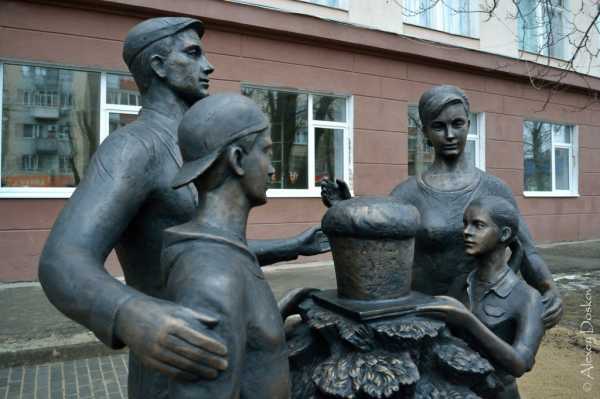


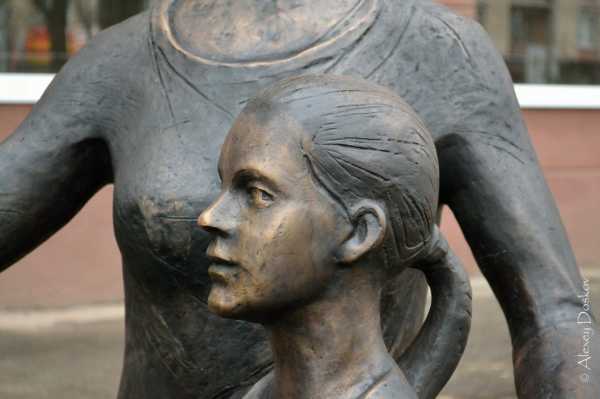
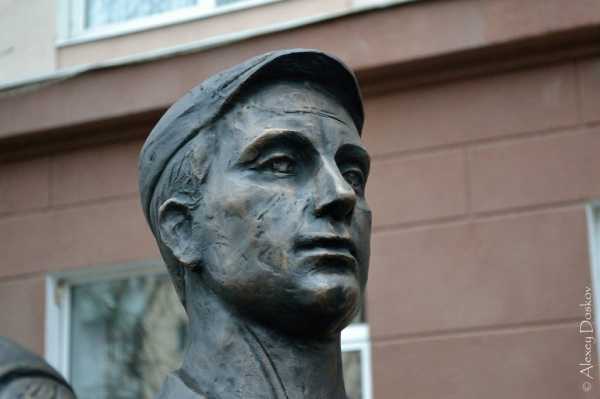
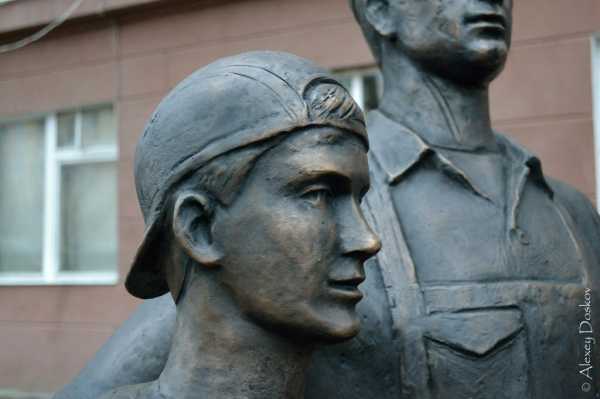
Лично мне ста скульптурная группа понравилась, хоть тела этих трудяг непомерно худые и даже изможденные.
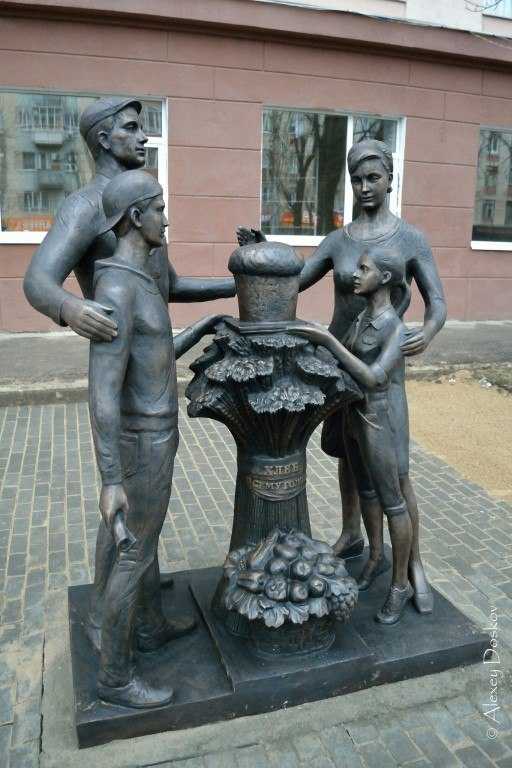

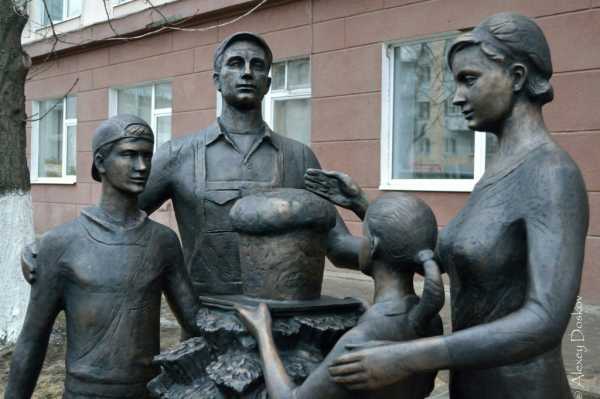
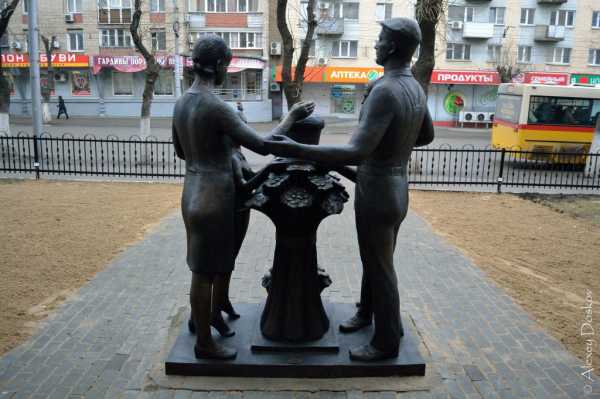
Ранее предполагалось, что памятник установят на проспекте Кирова рядом с аграрным университетом. Было много разных проектов. Вот некоторые из них.
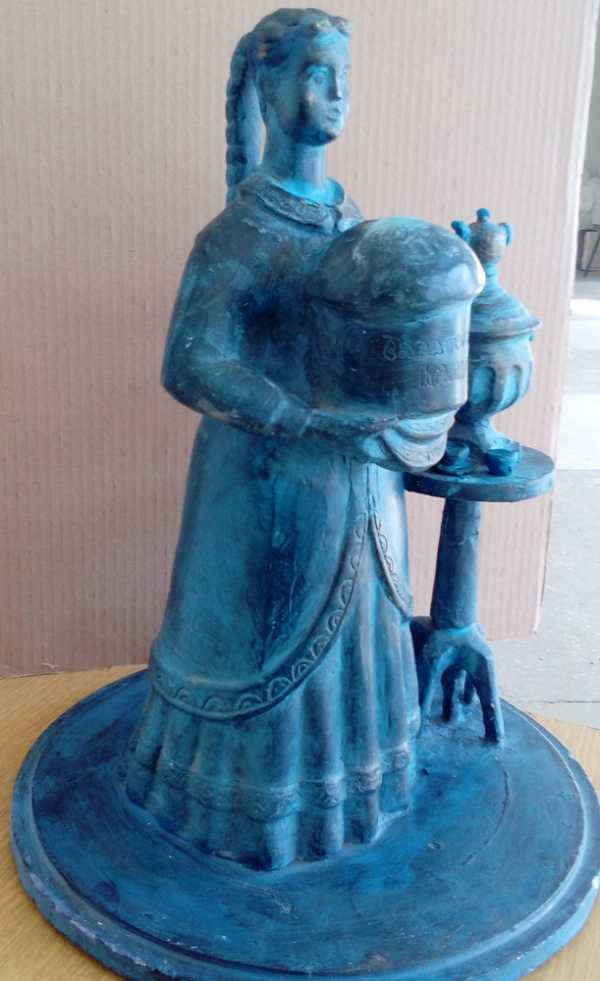

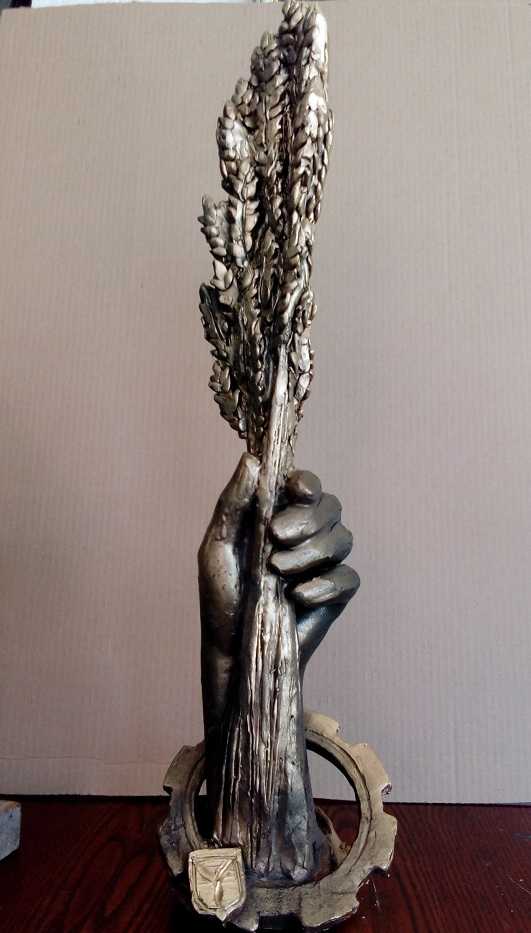


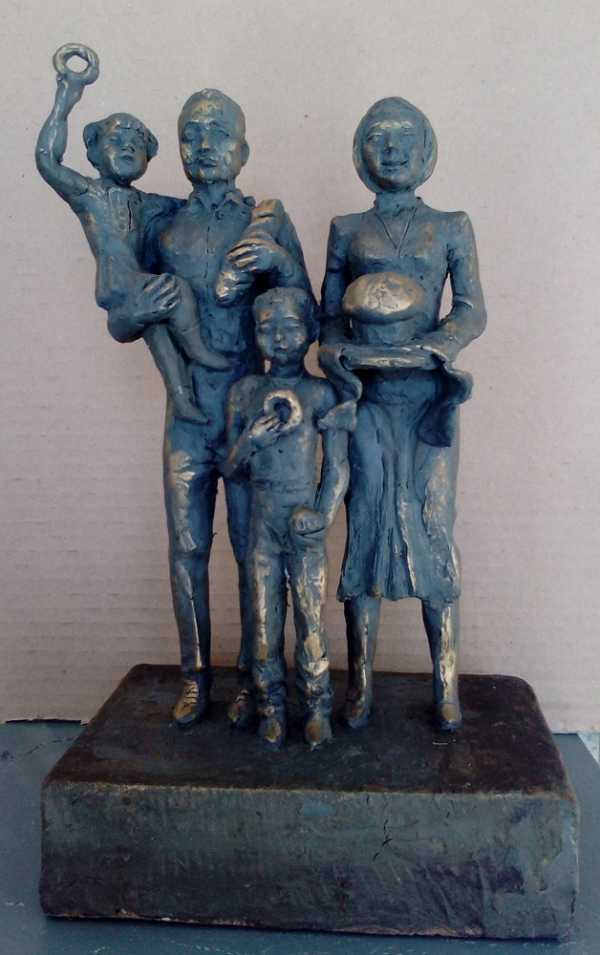
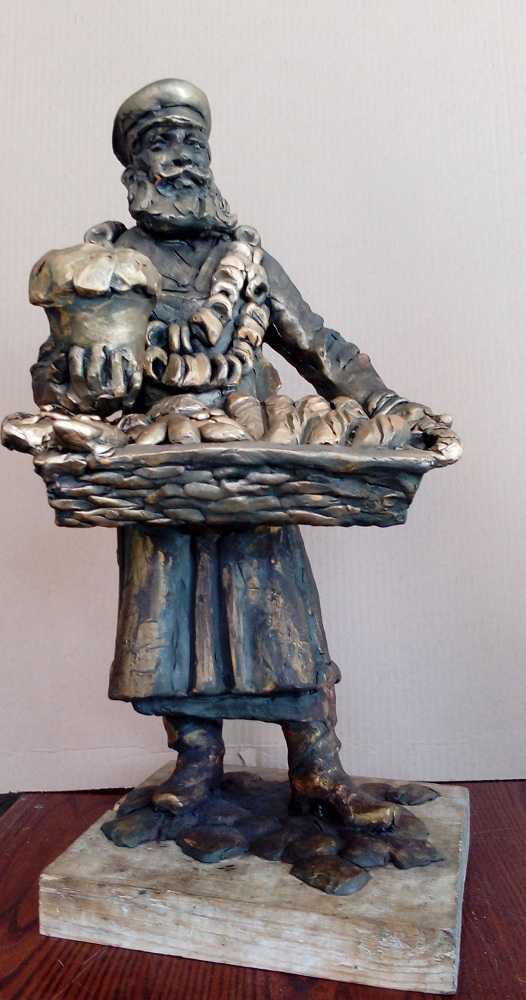
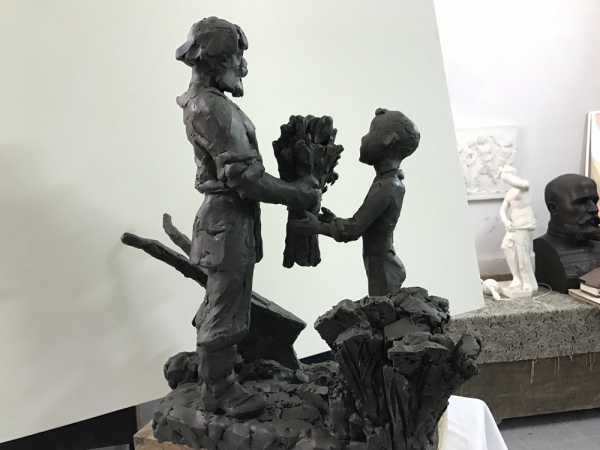
Вот так.
aleksdos.livejournal.com
Хлеб (скульптурная композиция) Вики
| Памятник | |
| Скульптурная композиция «Хлеб» | |
| Скульптурная композиция «Хлеб» | |
| Страна | Россия |
| Город | Москва |
| Скульптор | В. И. Мухина |
| Архитектор | И. Е. Рожин[1] |
Скульптурная композиция «Хлеб» в Москве установлена на Ленинградском проспекте в Парке Дружбы.
История[ | код]
Скульптурная композиция «Хлеб» была установлена в 1963 году рядом с центральным входом в Парк Дружбы, расположенного неподалеку от Речного вокзала. Две молодые девушки поднимают над головой огромный сноп колосьев. Скульптура выполнена по эскизам советского скульптора Веры Мухиной — автора памятника Рабочий и колхозница. Является парной с установленной неподалеку скульптурной композицией Плодородие.
Примечания[ | код]
- ↑ Памятники Москвы советской на карте города // Московское наследие. — 2014. — № 6 (36). — С. 18—21.
Ссылки[ | код]
- Скульптурная композиция Хлеб (рус.). Проверено 20 июля 2014.
| Это заготовка статьи о Москве. Вы можете помочь проекту, дополнив её. |
|
|
|
|
|
ru.wikibedia.ru









